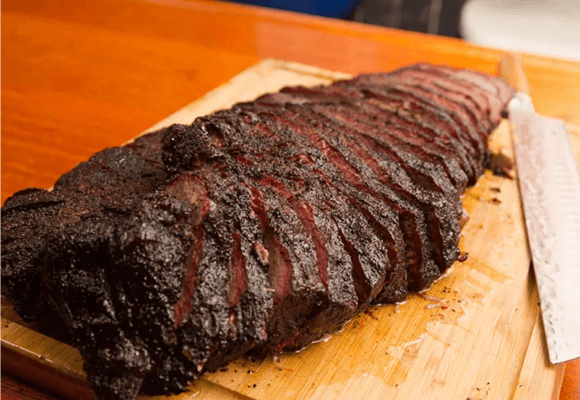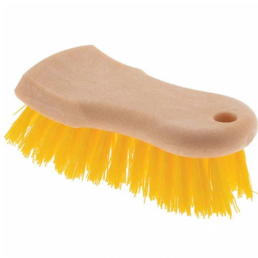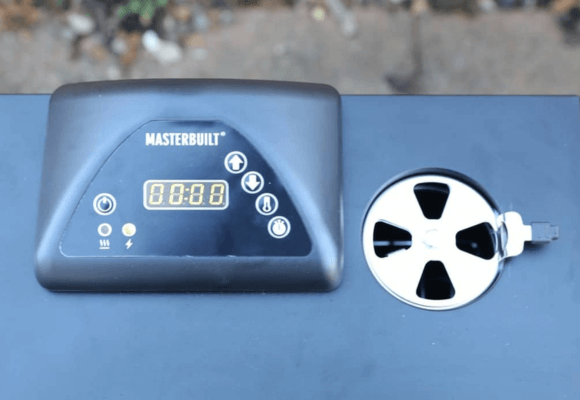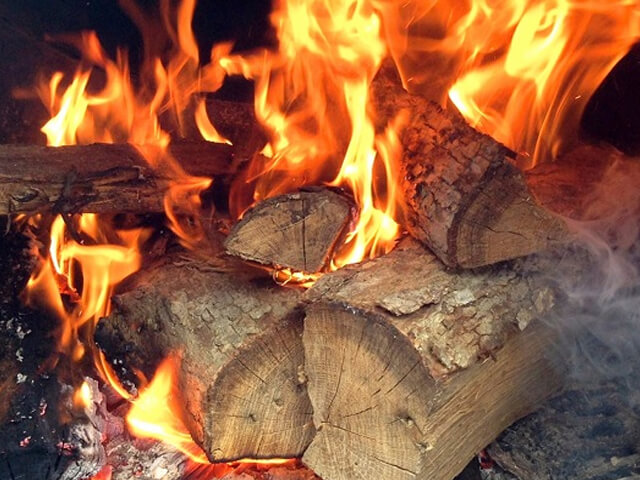Creosote buildup can occur in any type of smoker or grill that uses wood or wood products (like wood chips, charcoal, or pellets) for smoking or grilling meat.
When it comes to cooking, particularly smoking or barbecuing meat, there is a concern about creosote formation because it can adhere to the surface of the meat. This substance is recognized for its strong, smoky flavor, but it can also be harmful if ingested in large quantities.
Regardless of the type of grill or smoker, the key factors that contribute to creosote formation include the combustion temperature, the amount of oxygen available for the fire (ventilation), and the type and moisture content of the wood.
In my offset smoker, I often deal with too much creosote on the meat. I’ve tried various methods to counter it. Here, I will try to provide detailed accounts of my experiences. However, I became a bit worried when I researched its impact on health. I aim to provide you with everything that will help, and now I’ve managed to make my smoked food taste better.
What is creosote?
Creosote is known to be a byproduct of the combustion process of wood. This complex mixture comprises a variety of chemicals, such as phenols, cresols, and various organic compounds. During the burning of wood in a smoker, the smoke produced contains these compounds. When the smoke cools, it can condense, forming a sticky, tar-like substance. This substance can accumulate on the cooler surfaces inside the smoker and, notably, on the surface of the meat being smoked, resulting in a bitter taste in the smoked meat..
Is Creosote On Meat Dangerous?
Yes, creosote on meat can be dangerous if consumed in large amounts. Eating it may cause burning in the mouth, stomach irritation, nausea, vomiting, and diarrhea. Eating a small amount once may not significantly impact your health, but there could be serious effects if consumed more frequently.
Creosote contains compounds that are known to be carcinogenic (cancer-causing) to humans, as classified by the International Agency for Research on Cancer (IARC).

Long-term eating to high levels of creosote in any way, through repeated consumption of heavily contaminated foods, can increase the risk of developing cancer. Therefore, it’s important to manage and minimize creosote buildup when smoking meat to ensure it remains safe to eat.
Creosote is not a good option for barbecue. Regularly, while grilling, identify if the smoke color is clear or blue, which is a good sign and provides desired results.
How To Get Rid Of Creosote In Smoker?
To effectively remove creosote from your smoker and ensure a clean, efficient smoking environment, it’s important to follow a detailed cleaning regimen. I learned these techniques from different pitmasters and the BBQ community. Below is an expanded guide based on the main steps for getting rid of creosote in your smoker:
Before you start, make sure you have the appropriate safety gear. This includes gloves, eye protection, and a dust mask to prevent inhalation of creosote particles.
Use a Wire Brush
Using a steel wire brush effectively removes tougher creosote deposits, which can interfere with the smoker’s performance and affect the taste of your food.
Scrub the grates, inside walls, and other areas vigorously where creosote has built up with a wire brush. Be thorough but gentle to avoid damaging the smoker’s surfaces.

Once you’ve scrubbed the entire area, use a smaller brush or a vacuum designed for ash removal to clean out the base of the fireplace, stove, or bottom of the chimney. Ensure all loosened creosote is removed to prevent it from igniting.
Water Cleaning
You can also use a soapy water solution made with mild detergent and warm water for removal. I personally use a vinegar solution and sometimes baking soda for stubborn areas.
Vinegar is a natural degreaser and cleaner capable of breaking down creosote without harsh chemicals. You can apply it by spraying or wiping down the interior surfaces with a mixture of equal parts water and vinegar. Allow it to sit for a few minutes before wiping it off to maximize its cleaning effect.
Rinse Thoroughly
Rinsing removes any remaining soap, dirt, and loosened creosote, preventing them from burning and affecting the smoker’s efficiency and taste.
So you need to use clean water to rinse all surfaces inside the smoker. Ensure no soap residue is left behind. Dry thoroughly to prevent rust.
Heat It Up
Just as heating up the smoker can remove mold from a moldy grill, this method also works for creosote. Heating the smoker can help burn off any remaining creosote residue, sanitizing the interior surfaces.
Run the smoker empty at a high temperature for about an hour. Keep the vents open to allow for proper airflow and the escape of any vapors.
Tips to avoid creosote on smoker
To avoid creosote buildup in your smoker, which can affect both the taste of your smoked foods and your health, consider these tips:
Maintain Good Airflow
Proper airflow ensures complete combustion of the wood, reducing the amount of creosote that forms.
Keep the vents on your smoker partially open to allow smoke to circulate and escape. Adjust as needed based on the fire’s intensity and outside conditions. Vent issues are common with electric smokers, especially with Masterbuilt models. Therefore, it’s important to adjust them properly to ensure good airflow.

Use Seasoned & Right Wood
Seasoned (dried) wood burns more completely than green (fresh) wood, and the results is producing less creosote. Look for wood that is dark in color, cracked at the ends, lightweight, and makes a clear, hollow sound when knocked together.
Seasoned wood, which has been allowed to dry for at least 6-12 months, burns more completely.
Avoid using green wood or wood with a high sap content, like pine. Different woods produce different amounts of smoke and can affect the flavor and amount of creosote on the smoker.
Hardwoods like oak, hickory, maple, and fruitwoods like apple and cherry are recommended for smoking because they burn cleanly and offer desirable flavors.

If you are using a charcoal or pellet smoker, try to avoid using fuels with high moisture content, as drier fuels stay lit better and produce less creosote.
Control Smoking Temperature
Low temperatures can lead to incomplete combustion of wood and too much smoke can also lead to creosote settling on your food and the interior of your smoker.
Aim to keep your smoking temperatures within the ideal range, typically between 225°F and 275°F. Use a thermometer to monitor and adjust as necessary.
